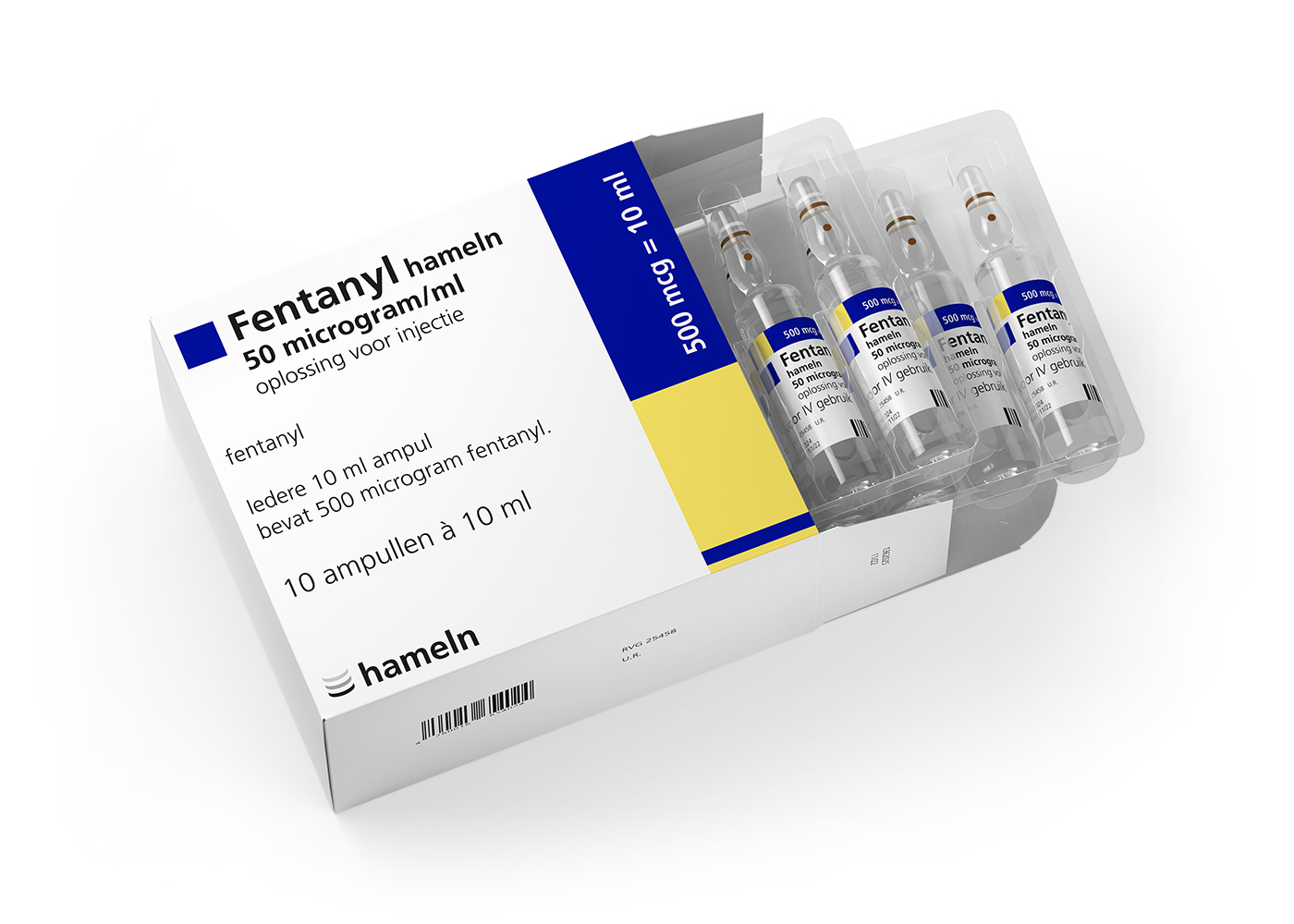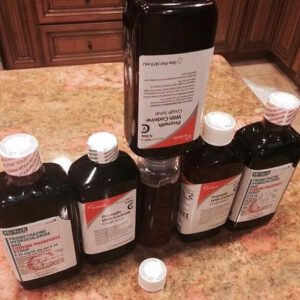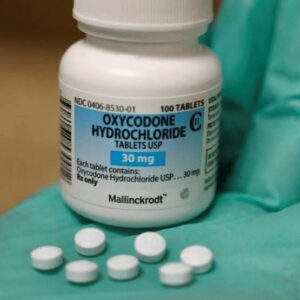Buy fentanyl vials UK
Buy fentanyl vials UK, Fentanyl Injections For Sale England ,Where to buy fentanyl online Scotland,Order fentanil Northern Ireland , Fentanyl online supplier Wales
FENTANYL (FEN ta nil) treats severe pain. It may also be used to cause drowsiness before a procedure. It is often prescribed when other pain medications do not work well enough or cannot be tolerated. It works by blocking pain signals in the brain. It belongs to a group of medications called opioids.
This medicine may be used for other purposes; ask your health care provider or pharmacist if you have questions.
COMMON BRAND NAME(S): Sublimaze
Verfen® (Fentanyl citrate) is a narcotic analgesic. A dose of 100 mcg (0.1 mg) (2 mL) is approximately equivalent in analgesic activity to 10 mg of morphine or 75 mg of meperidine. The principal actions of therapeutic value are analgesia and sedation. Alterations in respiratory rate and alveolar ventilation, associated with narcotic analgesics, may last longer than the analgesic effect. As the dose of narcotic is increased, the decrease in pulmonary exchange becomes greater. Large doses may produce apnea. Fentanyl appears to have less emetic activity than either morphine or meperidine. Histamine assays and skin wheal testing in man indicate that clinically significant histamine release rarely occurs with fentanyl. Recent assays in man show no clinically significant histamine release in dosages up to 50 mcg/kg (0.05 mg/kg) (1 mL/kg). Fentanyl preserves cardiac stability, and blunts stress-related hormonal changes at higher doses.
The pharmacokinetics of fentanyl can be described as a three-compartment model, with a distribution time of 1.7 minutes, redistribution of 13 minutes, and a terminal elimination half-life of 219 minutes. The volume of distribution for fentanyl is 4 L/kg.
Fentanyl plasma protein binding capacity decreases with increasing ionization of the drug. Alterations in pH may affect its distribution between plasma and the central nervous system. It accumulates in skeletal muscle and fat, and is released slowly into the blood. Fentanyl, which is primarily transformed in the liver, demonstrates a high first pass clearance and releases approximately 75% of an intravenous dose in urine, mostly as metabolites with less than 10% representing the unchanged drug. Approximately 9% of the dose is recovered in the feces, primarily as metabolites.Buy fentanyl vials UK, Fentanyl Injections For Sale England ,Where to buy fentanyl online Scotland,Order fentanil Northern Ireland , Fentanyl online supplier Wales
The onset of action of fentanyl is almost immediate when the drug is given intravenously; however, the maximal analgesic and respiratory depressant effect may not be noted for several minutes. The usual duration of action of the analgesic effect is 30 to 60 minutes after a single intravenous dose of up to 100 mcg (0.1 mg) (2 mL). Following intramuscular administration, the onset of action is from seven to eight minutes, and the duration of action is one to two hours. As with longer acting narcotic analgesics, the duration of the respiratory depressant effect of fentanyl may be longer than the analgesic effect. The following observations have been reported concerning altered respiratory response to CO2 stimulation following administration of fentanyl citrate to man.
1. DIMINISHED SENSITIVITY TO CO2 STIMULATION MAY PERSIST LONGER THAN DEPRESSION OF RESPIRATORY RATE. (Altered sensitivity to CO2 stimulation has been demonstrated for up to four hours following a single dose of 600 mcg (0.6 mg) (12 mL) fentanyl to healthy volunteers.) Fentanyl frequently slows the respiratory rate, duration, and degree of respiratory depression being dose related.
2. The peak respiratory depressant effect of a single intravenous dose of fentanyl citrate is noted 5 to 15 minutes following injection. See also WARNINGS and PRECAUTIONS concerning respiratory depression.Buy fentanyl vials UK, Fentanyl Injections For Sale England ,Where to buy fentanyl online Scotland,Order fentanil Northern Ireland , Fentanyl online supplier Wales
INDICATIONS AND USAGE
Verfen® (Fentanyl citrate injection) is indicated: For analgesic action of short duration during the anesthetic periods, premedication, induction and maintenance, and in the immediate postoperative period (recovery room) as the need arises. for use as a narcotic analgesic supplement in general or regional anesthesia. for administration with a neuroleptic such as droperidol injection as an anesthetic premedication, for the induction of anesthesia, and as an adjunct in the maintenance of general and regional anesthesia. for use as an anesthetic agent with oxygen in selected high risk patients, such as those undergoing open heart surgery or certain complicated neurological or orthopedic procedures.
CONTRAINDICATION
Verfen® (Fentanyl citrate) injection is contraindicated in patients with known intolerance to the drug.
WARNINGS
VERFEN® (FENTANYL CITRATE) SHOULD BE ADMINISTERED ONLY BY PERSONS SPECIFICALLY TRAINED IN THE USE OF INTRAVENOUS ANESTHETICS AND MANAGEMENT OF THE RESPIRATORY EFFECTS OF POTENT OPIOIDS.
AN OPIOID ANTAGONIST, RESUSCITATIVE AND INTUBATION EQUIPMENT, AND OXYGEN SHOULD BE READILY AVAILABLE.
See also discussion of narcotic antagonists in PRECAUTIONS and OVERDOSAGE.Buy fentanyl vials UK, Fentanyl Injections For Sale England ,Where to buy fentanyl online Scotland,Order fentanil Northern Ireland , Fentanyl online supplier Wales
If Verfen® is administered with a tranquilizer such as droperidol, the user should become familiar with the special properties of each drug, particularly the widely differing duration of action. In addition, when such a combination is used, fluids and other countermeasures to manage hypotension should be available.
As with other potent narcotics, the respiratory depressant effect of fentanyl may persist longer than the measured analgesic effect. The total dose of all narcotic analgesics administered should be considered by the practitioner before ordering narcotic analgesics during recovery from anesthesia. It is recommended that narcotics, when required, should be used in reduced doses initially, as low as 1/4 to 1/3 those usually recommended.Buy fentanyl vials UK, Fentanyl Injections For Sale England ,Where to buy fentanyl online Scotland,Order fentanil Northern Ireland , Fentanyl online supplier Wales
Fentanyl may cause muscle rigidity, particularly involving the muscles of respiration. In addition, skeletal muscle movements of various groups in the extremities, neck, and external eye have been reported during induction of anesthesia with fentanyl; these reported movements have, on rare occasions, been strong enough to pose patient management problems. This effect is related to the dose and speed of injection and its incidence can be reduced by: 1) administration of up to 1/4 of the full paralyzing dose of a nondepolarizing neuromuscular blocking agent just prior to administration of fentanyl citrate; 2) administration of a full paralyzing dose of a neuromuscular blocking agent following loss of eyelash reflex when fentanyl is used in anesthetic doses titrated by slow intravenous infusion; or, 3) simultaneous administration of fentanyl citrate and a full paralyzing dose of a neuromuscular blocking agent when fentanyl citrate is used in rapidly administered anesthetic dosages. The neuromuscular blocking agent used should be compatible with the patient’s cardiovascular status.
Adequate facilities should be available for postoperative monitoring and ventilation of patients administered anesthetic doses of fentanyl. Where moderate or high doses are used (above 10 mcg/kg), there must be adequate facilities for postoperative observation, and ventilation if necessary, of patients who have received fentanyl. It is essential that these facilities be fully equipped to handle all degrees of respiratory depression.
Fentanyl may also produce other signs and symptoms characteristic of narcotic analgesics including euphoria, miosis, bradycardia, and bronchoconstriction.
Severe and unpredictable potentiation by MAO inhibitors has been reported for other narcotic analgesics. Although this has not been reported for fentanyl, there are insufficient data to establish that this does not occur with fentanyl. Therefore, when fentanyl is administered to patients who have received MAO inhibitors within 14 days, appropriate monitoring and ready availability of vasodilators and beta-blockers for the treatment of hypertension is indicated.
Head Injuries and Increased Intracranial Pressure — Fentanyl should be used with caution in patients who may be particularly susceptible to respiratory depression, such as comatose patients who may have a head injury or brain tumor. In addition, fentanyl may obscure the clinical course of patients with head injury.Buy fentanyl vials UK, Fentanyl Injections For Sale England ,Where to buy fentanyl online Scotland,Order fentanil Northern Ireland , Fentanyl online supplier Wales
PRECAUTIONS
General
The initial dose of Verfen® (fentanyl citrate) should be appropriately reduced in elderly and debilitated patients. The effect of the initial dose should be considered in determining incremental doses.
Nitrous oxide has been reported to produce cardiovascular depression when given with higher doses of fentanyl.
Certain forms of conduction anesthesia, such as spinal anesthesia and some peridural anesthetics, can alter respiration by blocking intercostal nerves. Through other mechanisms (see CLINICAL PHARMACOLOGY) fentanyl can also alter respiration. Therefore, when fentanyl is used to supplement these forms of anesthesia, the anesthetist should be familiar with the physiological alterations involved, and be prepared to manage them in the patients selected for these forms of anesthesia.
When a tranquilizer such as droperidol is used with fentanyl, pulmonary arterial pressure may be decreased. This fact should be considered by those who conduct diagnostic and surgical procedures where interpretation of pulmonary arterial pressure measurements might determine final management of the patient. When high dose or anesthetic dosages of fentanyl are employed, even relatively small dosages of diazepam may cause cardiovascular depression.
When fentanyl is used with a tranquilizer such as droperidol, hypotension can occur. If it occurs, the possibility of hypovolemia should also be considered and managed with appropriate parenteral fluid therapy. Repositioning the patient to improve venous return to the heart should be considered when operative conditions permit. Care should be exercised in moving and positioning of patients because of the possibility of orthostatic hypotension. If volume expansion with fluids plus other countermeasures do not correct hypotension, the administration of pressor agents other than epinephrine should be considered. Because of the alpha-adrenergic blocking action of droperidol, epinephrine may paradoxically decrease the blood pressure in patients treated with droperidol.Buy fentanyl vials UK, Fentanyl Injections For Sale England ,Where to buy fentanyl online Scotland,Order fentanil Northern Ireland , Fentanyl online supplier Wales
Elevated blood pressure, with and without preexisting hypertension, has been reported following administration of fentanyl citrate combined with droperidol. This might be due to unexplained alterations in sympathetic activity following large doses; however, it is also frequently attributed to anesthetic and surgical stimulation during light anesthesia.
When droperidol is used with fentanyl and the EEG is used for postoperative monitoring, it may be found that the EEG pattern returns to normal slowly.
Vital signs should be monitored routinely.
Respiratory depression caused by opioid analgesics can be reversed by opioid antagonists such as naloxone. Because the duration of respiratory depression produced by fentanyl may last longer than the duration of the opioid antagonist action, appropriate surveillance should be maintained. As with all potent opioids, profound analgesia is accompanied by respiratory depression and diminished sensitivity to CO2 stimulation which may persist into or recur in the postoperative period. Intraoperative hyperventilation may further alter postoperative response to CO2. Appropriate postoperative monitoring should be employed to ensure that adequate spontaneous breathing is established and maintained in the absence of stimulation prior to discharging the patient from the recovery area.
Impaired Respiration: Fentanyl should be used with caution in patients with chronic obstructive pulmonary disease, patients with decreased respiratory reserve, and others with potentially compromised respiration. In such patients, narcotics may additionally decrease respiratory drive and increase airway resistance. During anesthesia, this can be managed by assisted or controlled respiration. Impaired Hepatic or Renal Function: Fentanyl citrate should be administered with caution to patients with liver and kidney dysfunction because of the importance of these organs in the metabolism and excretion of drugs.
Cardiovascular Effects: Fentanyl may produce bradycardia, which may be treated with atropine. Fentanyl should be used with caution in patients with cardiac bradyarrhythmias. Drug Interactions: Other CNS depressant drugs (e.g., barbiturates, tranquilizers, narcotics, and general anesthetics) will have additive or potentiating effects with fentanyl. When patients have received such drugs, the dose of fentanyl required will be less than usual. Following the administration of fentanyl citrate, the dose of other CNS depressant drugs should be reduced.
Carcinogenesis, Mutagenesis, Impairment of Fertility: No carcinogenicity or mutagenicity studies have been conducted with fentanyl citrate. Reproduction studies in rats revealed a significant decrease in the pregnancy rate of all experimental groups. This decrease was most pronounced in the high dosed group (1.25 mg/kg-12.5X human dose) in which one of twenty animals became pregnant.
Pregnancy — Category C: Fentanyl citrate has been shown to impair fertility and to have an embryocidal effect in rats when given in doses 0.3 times the upper human dose for a period of 12 days. No evidence of teratogenic effects have been observed after administration of fentanyl citrate to rats. There are no adequate and well-controlled studies in pregnant women. Fentanyl should be used during pregnancy only if the potential benefit justifies the potential risk to the fetus.
Labor and Delivery: There are insufficient data to support the use of fentanyl in labor and delivery. Therefore, such use is not recommended.
Nursing Mothers: It is not known whether this drug is excreted in human milk. Because many drugs are excreted in human milk, caution should be exercised when fentanyl citrate is administered to a nursing woman.
Pediatric Use: The safety and efficacy of fentanyl citrate in children under two years of age has not been established.
Rare cases of unexplained clinically significant methemoglobinemia have been reported in premature neonates undergoing emergency anesthesia and surgery which included combined use of fentanyl, pancuronium, and atropine. A direct cause and effect relationship between the combined use of these drugs and the reported cases of methemoglobinemia has not been established.
ADVERSE REACTIONS
As with other narcotic analgesics, the most common serious adverse reactions reported to occur with fentanyl are respiratory depression, apnea, rigidity, and bradycardia; if these remain untreated, respiratory arrest, circulatory depression or cardiac arrest could occur. Other adverse reactions that have been reported are hypertension, hypotension, dizziness, blurred vision, nausea, emesis, laryngospasm, and diaphoresis.
It has been reported that secondary rebound respiratory depression may occasionally occur postoperatively. Patients should be monitored for this possibility and appropriate countermeasures taken as necessary.
When a tranquilizer such as droperidol is used with fentanyl citrate, the following adverse reactions can occur: chills and/or shivering, restlessness, and postoperative hallucinatory episodes (sometimes associated with transient periods of mental depression); extrapyramidal symptoms (dystonia, akathisia, and oculogyric crisis) have been observed up to 24 hours postoperatively. When they occur, extrapyramidal symptoms can usually be controlled with antiparkinson agents. Postoperative drowsiness is also frequently reported following the use of droperidol.
DRUG ABUSE AND DEPENDENCE
Fentanyl citrate injection is a Schedule II controlled drug substance that can produce drug dependence of the morphine type and, therefore, has the potential for being abused.
OVERDOSAGE
Manifestations: The manifestations of fentanyl overdosage are an extension of its pharmacologic actions (see CLINICAL PHARMACOLOGY) as with other opioid analgesics. The intravenous LD50 of fentanyl is 3 mg/kg in rats, 1 mg/kg in cats, 14 mg/kg in dogs, and 0.03 mg/kg in monkeys.
Treatment: In the presence of hypoventilation or apnea, oxygen should be administered and respiration should be assisted or controlled as indicated. A patent airway must be maintained; an oropharyngeal airway or endotracheal tube might be indicated. If depressed respiration is associated with muscular rigidity, an intravenous neuromuscular blocking agent might be required to facilitate assisted or controlled respiration. The patient should be carefully observed for 24 hours; body warmth and adequate fluid intake should be maintained. If hypotension occurs and is severe or persists, the possibility of hypovolemia should be considered and managed with appropriate parenteral fluid therapy. A specific narcotic antagonist such as naloxone should be available for use as indicated to manage respiratory depression. This does not preclude the use of more immediate countermeasures. The duration of respiratory depression following overdosage of fentanyl may be longer than the duration of narcotic antagonist action. Consult the package insert of the individual narcotic antagonists for details about use.
DOSAGE AND ADMINISTRATION
50 mcg = 0.05 mg = 1 mL
Dosage should be individualized. Some of the factors to be considered in determining the dose are age, body weight, physical status, underlying pathological condition, use of other drugs, type of anesthesia to be used and the surgical procedure involved. Dosage should be reduced in elderly or debilitated patients.
Vital signs should be monitored routinely.
I. Premedication — Premedication (to be appropriately modified in the elderly, debilitated, and those who have received other depressant drugs)—50 mcg to 100 mcg (0.05 mg to 0.1 mg) (1 mL to 2 mL) may be administered intramuscularly 30 to 60 minutes prior to surgery.
II. Adjunct to General Anesthesia — See Dosage Range Chart
III. Adjunct to Regional Anesthesia — 50 mcg to 100 mcg (0.05 mg to 0.1 mg) (1 mL to 2 mL) may be administered intramuscularly or slowly intravenously, over one to two minutes, when additional analgesia is required.
IV. Postoperatively (recovery room) — 50 mcg to 100 mcg (0.05 mg to 0.1 mg) (1 mL to 2 mL) may be administered intramuscularly for the control of pain, tachypnea, and emergence delirium. The dose may be repeated in one to two hours as needed.
Fentanyl Injections For Sale UK
Do not take this medication with any of the following:
- Mifepristone
This medication may also interact with the following:
- Alcohol
- Antihistamines for allergy, cough and cold
- Antiviral medications for HIV or AIDS
- Atropine
- Certain antibiotics like clarithromycin, erythromycin, rifampin
- Certain medications for anxiety or sleep
- Certain medications for bladder problems like oxybutynin, tolterodine
- Certain medications for blood pressure, heart disease, irregular heart beat
- Certain medications for depression like amitriptyline, fluoxetine, sertraline
- Certain medications for diabetes like pioglitazone, troglitazone
- Certain medications for fungal infections like ketoconazole and itraconazole
- Certain medications for migraine headache like almotriptan, eletriptan, frovatriptan, naratriptan, rizatriptan, sumatriptan, zolmitriptan
- Certain medications for nausea or vomiting like aprepitant, dolasetron, granisetron, ondansetron
- Certain medications for seizures like phenobarbital, phenytoin, primidone
- Certain medications for stomach problems like dicyclomine, hyoscyamine
- Certain medications for travel sickness like scopolamine
- Certain medications for Parkinson’s disease like benztropine, trihexyphenidyl
- Cimetidine
- Diuretics
- General anesthetics like halothane, isoflurane, methoxyflurane, propofol
- Grapefruit juice
- Ipratropium
- Linezolid
- Local anesthetics like lidocaine, pramoxine, tetracaine
- MAOIs like Carbex, Eldepryl, Marplan, Nardil, and Parnate
- Medications that relax muscles for surgery
- Methylene blue
- Other narcotic medications for pain or cough
- Phenothiazines like chlorpromazine, mesoridazine, prochlorperazine, thioridazine
- St. John’s wort
- Steroid medications like prednisone or cortisone
This list may not describe all possible interactions. Give your health care provider a list of all the medicines, herbs, non-prescription drugs, or dietary supplements you use. Also tell them if you smoke, drink alcohol, or use illegal drugs. Some items may interact with your medicine.
Where to buy fentanyl online England
Tell your care team if your pain does not go away, if it gets worse, or if you have new or a different type of pain. You may develop tolerance to this medication. Tolerance means that you will need a higher dose of the medication for pain relief. Tolerance is normal and is expected if you take this medication for a long time.
Do not suddenly stop taking your medication because you may develop a severe reaction. Your body becomes used to the medication. This does NOT mean you are addicted. Addiction is a behavior related to getting and using a medication for a nonmedical reason. If you have pain, you have a medical reason to take pain medication. Your care team will tell you how much medication to take. If your care team wants you to stop the medication, the dose will be slowly lowered over time to avoid any side effects.
If you take other medications that also cause drowsiness like other narcotic pain medications, benzodiazepines, or other medications for sleep, you may have more side effects. Give your care team a list of all medications you use. They will tell you how much medication to take. Do not take more medication than directed. Get emergency help right away if you have trouble breathing or are unusually tired or sleepy.
Talk to your care team about naloxone and how to get it. Naloxone is an emergency medication used for an opioid overdose. An overdose can happen if you take too much opioid. It can also happen if an opioid is taken with some other medications or substances, like alcohol. Know the symptoms of an overdose, like trouble breathing, unusually tired or sleepy, or not being able to respond or wake up. Make sure to tell caregivers and close contacts where it is stored. Make sure they know how to use it. After naloxone is given, you must call emergency services. Naloxone is a temporary treatment. Repeat doses may be needed.
You may get drowsy or dizzy. Do not drive, use machinery, or do anything that needs mental alertness until you know how this medication affects you. Do not stand up or sit up quickly, especially if you are an older patient. This reduces the risk of dizzy or fainting spells. Alcohol may interfere with the effect of this medication. Avoid alcoholic drinks.
This medication will cause constipation. If you do not have a bowel movement for 3 days, call your care team.
Your mouth may get dry. Chewing sugarless gum or sucking hard candy and drinking plenty of water may help. Contact your care team if the problem does not go away or is severe.
Order fentanil Scotland
Side effects that you should report to your care team as soon as possible:
- Allergic reactions—skin rash, itching, hives, swelling of the face, lips, tongue, or throat
- CNS depression—slow or shallow breathing, shortness of breath, feeling faint, dizziness, confusion, trouble staying awake
- Low adrenal gland function—nausea, vomiting, loss of appetite, unusual weakness or fatigue, dizziness
- Low blood pressure—dizziness, feeling faint or lightheaded, blurry vision
- Muscle stiffness
Side effects that usually do not require medical attention (report to your care team if they continue or are bothersome):
- Dizziness
- Drowsiness
- Nausea
- Vomiting





Reviews
There are no reviews yet.